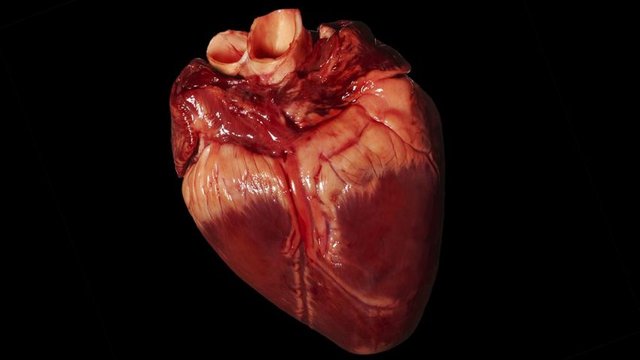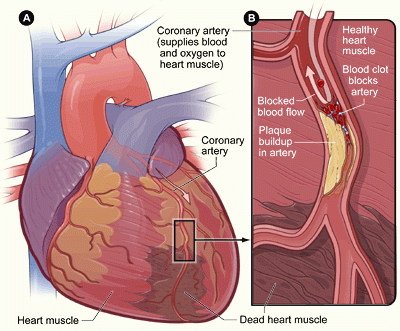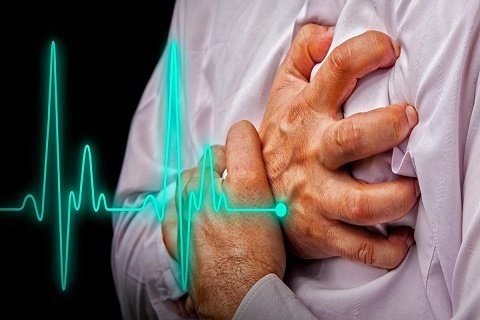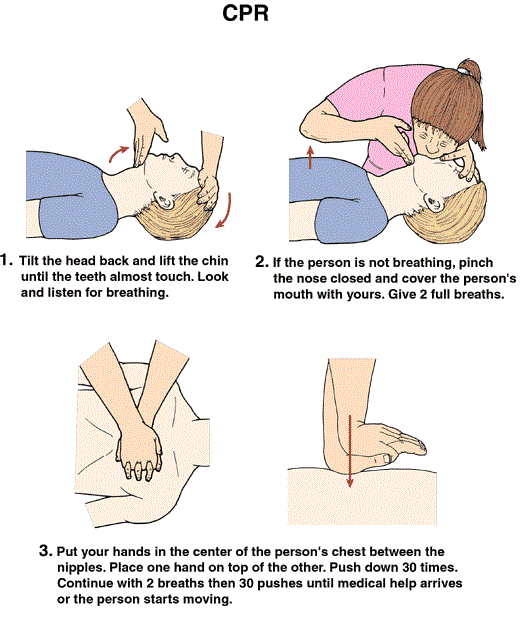Lets save our beloved ones from Heart Attacks - love ,beauty, and freedom. Celestial challenge.
The first signs of myocardial infarction

Myocardial infarction is a clinical form of ischemic heart disease that occurs with insufficient blood supply to the cardiac muscle (myocardium) and proceeds with the development of death of myocardial cells and the formation of a necrosis (necrosis) area of the myocardium. The incidence of heart attacks increases with age. In people over 50, the heart attack develops 5 times more often than at a younger age. It is also more common in men than in women. In the main there is a heart attack of the left ventricle, tk. The greatest burden falls on it, heart attacks of the right side of the heart are quite rare.
There are several types of myocardial infarction:

- Developed for no apparent reason (spontaneously), as a result of a primary disturbance of coronary blood flow caused by the formation of erosion, rupture, a crack atherosclerotic plaque.
- Developed due to a lack of oxygen flow to the heart muscle.
- A sudden death, including cardiac arrest, This type is placed before the possibility of taking blood samples or earlier than there is an increase in the level of biochemical markers of necrosis in the blood.
4a. Myocardial infarction associated with PCI (percutaneous coronary intervention).
4b. Associated with thrombosis of the coronary stent. - Myocardial infarction associated with coronary artery bypass surgery (CABG).
The risk factors for myocardial infarction include elevated levels of low density lipoprotein (LDL), high triglycerides in the blood, hypertension, smoking, sedentary lifestyle, obesity, diabetes mellitus, and previous myocardial infarction.
The first signs preceding myocardial infarction.

More than half of people with myocardial infarction in a few days or even weeks may have its first signs. However, in most cases no one pays any attention to them. Patients rarely seek medical help. Approximately 30% of patients still come to the doctor with complaints, but they are in many cases interpreted incorrectly.
Typically, the first signs include pain or discomfort in the left side of the chest, pain gives to the left half of the neck, lower jaw, left arm. Possible localization of pain or discomfort in the upper abdomen. Pain syndrome can be associated with physical activity, eating, emotional stress, but often pain can arise spontaneously, without a clear connection with the provoking factor. The duration of the pain syndrome is from 5 to 20 minutes or more. The pain stops or decreases their intensity when taking nitroglycerin.
In case there were earlier symptoms of stress angina, that is, the characteristic pains appeared under physical stress, were stopped by the intake of nitroglycerin, before myocardial infarction the disease changes its course to more aggressive. The pain is more intense, seizures become longer (more than 10-15 minutes), the area of pain radiography can expand, attacks can occur with much less physical exertion than before. Stenocardia of tension can be associated with rest angina, attacks of pain, burning sensations in the chest can appear at rest and at night. There may be increased fatigue, weakness, lethargy, sweating, dizziness, dyspnea may occur. This condition is called unstable angina. Unstable angina pectoris requires emergency admission to the cardiology department.
With timely access to a doctor, you can prevent the development of myocardial infarction.
Is it possible to predict the myocardial infarction
The onset of an infarction can be predicted if its cause is a gradual narrowing of the lumen of blood vessels that feed the heart, or a so-called "unstable plaque" appears, which is characteristic of atherosclerotic vascular lesions. If the cause is complete occlusion with a thrombus, then it is impossible to predict the onset of a heart attack. the blood instantly ceases to flow to the heart muscle and necrotic myocardium is formed. As noted above, the character of the pains appears or changes, they arise during exercise or at rest, after eating or with emotional stress, accompanied by general weakness, a sense of "fear", dizziness, cardiac rhythm disturbances. There may be shortness of breath, as the equivalent of a pain syndrome. Quite often myocardial infarction develops without any precursors, spontaneously.
First aid for signs of heart attack

*• Stop physical activity, try to calm the patient;
• Sitting or laying the patient;
• provide access to fresh air, loosen buttons, belts, collar;
• call an ambulance;
• measure blood pressure. At systolic pressure above 100 mm Hg, give 1 tablet of nitroglycerin under the tongue or make 1 inhalation under the tongue, in case of improvement of the patient's condition repeat the nitroglycerin intake after 10 minutes, then every 10 minutes before the arrival of the ambulance; at a greatly reduced pressure, nitroglycerin can not be taken;
• Be prepared for the start of resuscitation before the arrival of emergency medical care: indirect cardiac massage, artificial ventilation.*
In case of no pulses give artificial breathing.
Can we stop the development of myocardial infarction
If you noted the appearance of characteristic symptoms and immediately sought medical help, you can prevent the development of myocardial necrosis, hence the possible severe complications and death.
In the case of timely early diagnosis of myocardial infarction, thrombolytic therapy or PCI is performed, which is determined by the clinical situation, the nature of ECG changes.
Forecast
Lethal outcome with myocardial infarction is approximately 25-35%, more often at the pre-hospital stage or in the first hours in the hospital.
The prognosis in people after myocardial infarction largely depends on the time of restoration of blood flow in the artery. Restoration of perfusion during the first 1-2 hours is the most favorable prognostic sign. If the cause is eliminated for the first time for 4-6 hours, the myocardial lesion zone will be small and the likelihood of complications will also be small. Longer periods of blood flow restoration can subsequently lead to complications such as rhythm and conduction disorders, development of heart failure, mitral valve insufficiency, thromboembolic complications, papillary muscle dysfunction, heart ruptures, aneurysm formation, pericarditis development.
Images from- google images
https://plus.google.com/107081621311566998694/posts/fAfPFj4xMQQ
http://www.newsweek.com/pig-heart-baboon-animal-human-organ-transplant-444468
Thank you very much.
